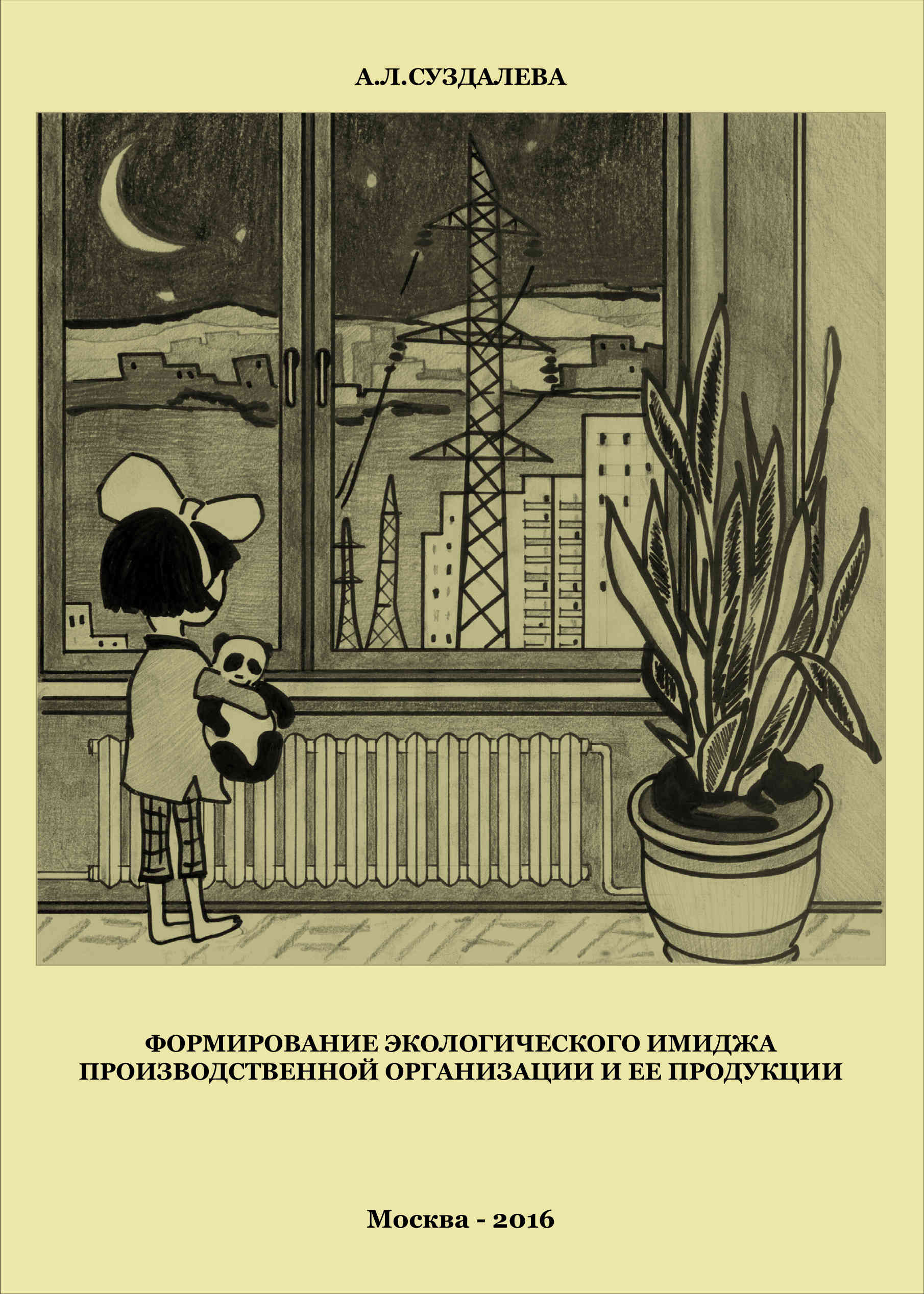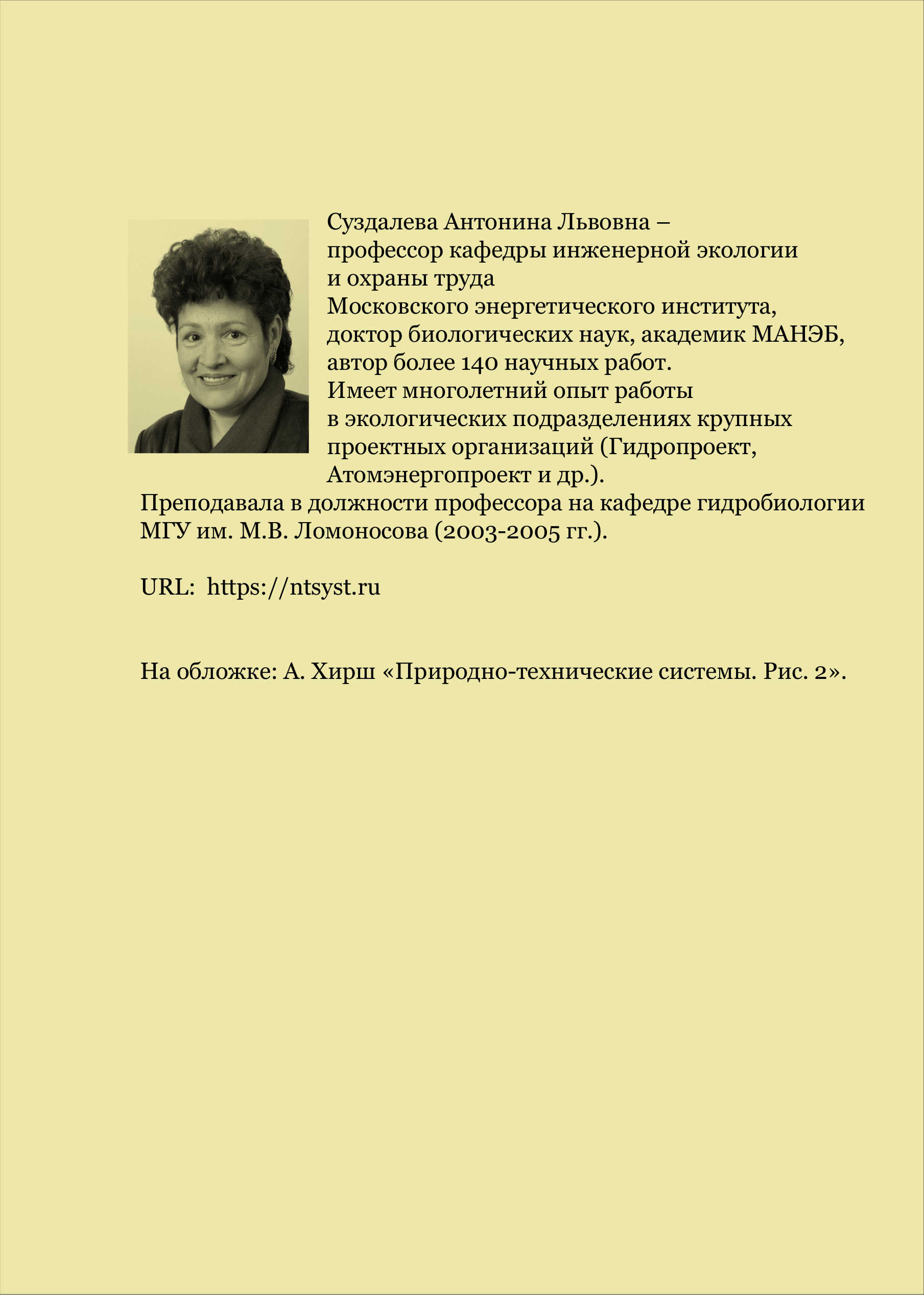|
The summary of the monograph
УДК 504
Suzdaleva A.L. |
|
|
A.L. Suzdaleva
«Formation of ecological image of industrial organization and its production»
Summary. Now the ecological image is an important attribute of the most various objects. Its value constantly increases. Until the middle of the XX century people showed interest only in the ecological image of food. Then a situation cardinally changed. Society began to show an attention to ecological properties of materials of clothes, a ware and furniture. The cars polluting air began to be alarming. Availability of natural objects to visit by people became particularly important. These trends of public life are caused two to the phenomena: "ecological fear" and loss of so-called "ecosystem services". Its role increases on a measure distribution in the society of knowledge of value of ecology to their lives. Ecosystem services are the benefits which are received by people from the environment. In particular, it is good conditions for rest and maintaining health. The urbanization deprives more and more people from these benefits and their value increases, as well as phobia of their loss.
The person always subjectively perceives a real. The environment for most people is not the reality in which they live. It is only the impression about this reality which is formed in their consciousness. People eat low-quality food if they don't know that it contains pollutants hazardous to health. Only information on presence of pollutants will cause desire to refuse it. But information can be positive. In this case people will give preference to these products. Actions of people define not real properties of food, but its ecological image. The relation of the modern people to many other objects is the same way formed. For example, information on presence at structural materials of harmful substances will become the powerful reason for refusal of purchase of the apartment. Therefore ecological image-making becomes more and more particularly important in industrial and trade spheres. Many states spend large sums for improvement of ecological image of services sector and the goods. At correctly organized image-making these expenses pay off in the shortest possible time.
The ecological image also becomes more and more significant factor of popularity of politicians and public organizations. Propagation of information on their intentions to improve ecological living conditions of the population inevitably increases electorate, gives in essence new opportunities for engaging to itself a general population.
However ecological image-making is used and as an effective remedy striking blows on reputation of the economic and political competitors. Only expressly prepared professionals can resist to these attacks.
For these reasons the ecological image-makers capable to advance and protect the interests of the organizations become more and more demanded. But training of qualified specialists in any area requires a theoretical basis. The purpose of the monograph is its creation in the sphere of ecological image-making. In the book the purposes and methods used in ecological image-making of various industrial enterprises, political organizations and government agencies are described. Basis of this activity in all cases is the informational-psychological influence directed to transformation of individual and mass consciousness. For this reason in the monograph the wide range of psychological and social problems is considered. Separate sections are devoted to methods of manipulation with mass consciousness. Possibilities of use in the area of ecological image-making of innovative and cross-disciplinary methods of work are described. For example, the author of the monograph suggests to plan work of image-makers on the basis of identification of the ecological frustrations and deprivations created in society. Classification of the stakeholders forming audience of ecological image-making is developed. Depending on the nature of their interests they are subdivided into social, territorial, technological, economic, political and administrative stakeholders. For work with each of categories of stakeholders the complex of special methods is offered. It is offered to use some ways of the analysis of a situation applied in other areas. For example, the phenomenon of "Overton window" is considered as the effective instrument of ecological image-making. The great value in image-making is allocated for the phenomenon of “implicit memory”. On concrete examples it is shown that formation of perception of objects happens in association with the memory of past events. Special attention in the monograph is paid to the analysis of the factors shaping the social situation around the industrial organization. The activity of various forces directed to the organization of the social-ecological conflicts is described. The author of the monograph in details considers motivation and ways of provocation of such conflicts and also describes methods on prevention of their development.
The book by A.L. Suzdaleva is not academic work. All ideas and methods offered in it are followed by examples on their practical use. The monograph also contains recommendations about the organization of ecological PR actions. For a facilitation of assimilation of information it included the dictionary of special terms. The book is intended for a wide range of readers dealing with the problems of industrial production, business and politics.
Keywords: ecological image, production imagemaking, manipulation of mass consciousness, socio-environmental conflict, stakeholder, Overton window, implicit memory, social environment of the industrial organization.
References: 134 items.
| Click on the link to download the monograph in RUSSIAN LANGUAGE: | in PDF format 2 437 КБ |
||
| TABLE OF CONTENTS | ||
| PREFACE | 6 | |
| INTRODUCTION | 9 | |
| CHAPTER I. GENERAL PROBLEMS OF THE ECOLOGICAL IMAGE-MAKING | 14 | |
| 1.1. DEFINITION OF THE TERM "ECOLOGICAL IMAGE OF THE INDUSTRIAL ORGANIZATION" AND TERMINOLOGICAL PROBLEMS IN THE AREA OF ECOLOGICAL IMAGE-MAKING | 14 | |
| 1.2. ASSESSMENT OF ECOLOGICAL IMAGE OF THE INDUSTRIAL ORGANIZATION, ITS VALUE FOR SEPARATE CATEGORIES OF ITS STAKEHOLDERS | 22 | |
| 1.3. OBJECTS OF ECOLOGICAL IMAGE-MAKING AND SPHERE OF ECOLOGICAL IMAGE | 25 | |
| 1.4. PERCEPTION BY CONSCIOUSNESS OF THE ENVIRONMENT. ECOLOGICAL FRUSTRATIONS AND DEPRIVATIONS | 30 | |
| 1.5. OVERTON WINDOW IN THE ECOLOGICAL IMAGE-MAKING | 39 | |
| 1.6. MAIN DIRECTIONS OF THE ECOLOGICAL IMAGE-MAKING | 45 | |
| 1.6.1. Project ecological image-making | 48 | |
| 1.6.2. Industrial ecological image-making (ecological image-making of industrial objects, corporations and industries) | 49 | |
| 1.6.3. Ecological image-making of constructions | 52 | |
| 1.6.4. Ecological image-making of technologeis and equipments | 53 | |
| 1.6.5. Ecological image-making of production | 54 | |
| 1.6.6. Ecological image-making of housing objects and residential territories | 60 | |
| 1.6.7. Ecological image-making of tourist objects and recreational objects | 64 | |
| 1.6.8. Ecological image-making of non-production organizations | 69 | |
| 1.6.9. Ecological image making of noncommercial organizations | 71 | |
| 1.6.10. Ecological image-making of political parties | 76 | |
| 1.6.11. Ecological image-making of especially protected natural objects and objects of cultural and historical heritage | 79 | |
| 1.6.12. Ecological image-making of the region (territory) | 80 | |
| 1.6.13. Ecological image-making of state institutions and interstate associations | 85 | |
| 1.6.14. Ecological image-making of transnational companies | 94 | |
| 1.6.15. Ecological image-making of the biosphere | 97 | |
| 1.7. STRATEGY AND TACTICS OF ECOLOGICAL IMAGE-MAKING, ITS MAIN TYPES AND GENERAL SCHEME OF FORMATION | 102 | |
| 1.8. STATE SUPPORT OF ECOLOGICAL IMAGE-MAKING | 124 | |
| 1.9. DECLARATION OF ECOLOGICAL IMAGE | 128 | |
| 1.10. ECOLOGICAL IMAGE-MAKING AND ECOLOGICAL MANAGEMENT OF THE INDUSTRIAL ORGANIZATION | 144 | |
| CHAPTER II. MANIPULATION WITH MASS CONSCIOUSNESS AND ORGANIZATION OF PR ACTIONS OF ECOLOGICAL IMAGE-MAKING | 148 | |
| 2.1. DEFINITION OF THE TERM "MANIPULATION BY THE MASS CONSCIOUSNESS". PURPOSES AND METHODS OF MANIPULATION BY THE MASS CONSCIOUSNESS | 148 | |
| 2.2. CONVICTION | 158 | |
| 2.2.1. The general principles of the convincing influence and its planning | 158 | |
| 2.2.2. Influence of a source of information | 162 | |
| 2.2.3. Influence of a content of information | 166 | |
| 2.2.4. Influence of a situation of informing | 172 | |
| 2.2.5. Conviction degree | 175 | |
| 2.3. SUGGESTION | 176 | |
| 2.3.1. Work on suggestion and its purpose | 176 | |
| 2.3.2. The general mechanism of the suggestion influence | 177 | |
| 2.3.3. Types of suggestion | 184 | |
| 2.3.4 Suggestibility and its forms | 188 | |
| 2.3.5. Resistance to suggestion | 192 | |
| 2.3.6. Main methods of suggestion | 194 | |
| 2.4. OTHER METHODS OF MANIPULATION BY THE MASS CONSCIOUSNESS | 198 | |
| 2.4.1. Disinformation | 198 | |
| 2.4.2. Manipulation of information | 199 | |
| 2.4.3. Rumors | 203 | |
| 2.4.4. Myths | 210 | |
| 2.5. PR TECHNOLOGIES IN ECOLOGICAL IMAGE-MAKING | 212 | |
| 2.5.1. Contents and structure of PR technologies | 212 | |
| 2.5.2. Applicability of PR technologies in the area of ecological image-making and their main forms | 219 | |
| 2.5.3. Information PR | 221 | |
| 2.5.4. Managemental PR | 231 | |
| CHAPTER III. THE STRATEGY OF FORMATION OF ECOLOGICAL IMAGE OF THE INDUSTRIAL ORGANIZATION IN VARIOUS CONDITIONS OF THE SOCIAL ENVIRONMENT | 235 | |
| 3.1. SOCIAL ENVIRONMENT AND THE RELATION OF SOCIETY TO THE INDUSTRIAL ORGANIZATION | 235 | |
| 3.2. INDIFFERENT RELATION OF THE PUBLIC | 242 | |
| 3.3. SPONTANEOUSLY FORMED NEGATIVE POSITION OF THE PUBLIC | 246 | |
| 3.4. THE PROVOKED NEGATIVE RELATION OF THE PUBLIC | 253 | |
| 3.5. SOCIAL-ECOLOGICAL CONFLICT | 267 | |
| 3.5.1. Value of the social-ecological conflicts in industrial image-making | 267 | |
| 3.5.2. Definition of the term "social-ecological conflict" and its parameters | 271 | |
| 3.5.3. Main types of the social-ecological conflicts | 276 | |
| 3.5.4. Standard scheme of development dynamics of the conflicts | 282 | |
| 3.5.5. Prevention of the social-ecological conflicts. Maintaining positive ecological image in a conflict situation | 293 | |
| CHAPTER IV. FORMATION OF POSITIVE ECOLOGICAL IMAGE OF INDUSTRIAL ORGANIZATION AND ITS PRODUCTION | 320 | |
| 4.1. MULTI-PLANNING AND SYSTEM OF FORMATION OF THE ECOLOGICAL IMAGE OF THE INDUSTRIAL ORGANIZATION | 320 | |
| 4.2. PLANNING OF WORK FOR CREATING A POSITIVE ECOLOGICAL IMAGE | 324 | |
| 4.3. FORMING ECOLOGICAL IMAGE FOR MAIN STAKEHOLDERS GROUPS | 333 | |
| 4.3.1. General and special measures | 333 | |
| 4.3.2. Economic Stakeholders | 334 | |
| 4.3.3. Administrative Stakeholders | 337 | |
| 4.3.4. Political Stakeholders | 342 | |
| 4.3.5. Social stakeholders | 348 | |
| 4.3.6. Territorial stakeholders | 357 | |
| 4.3.7. Technological Stakeholders | 359 | |
| CONCLUSION | 367 | |
| LITERATURE | 370 | |
| ANNEX I. List of abbreviations | 378 | |
| ANNEX II. Dictionary of special terms | 379 | |
| ANNEX III. Methods of distribution of ecologically relevant information | 403 | |

